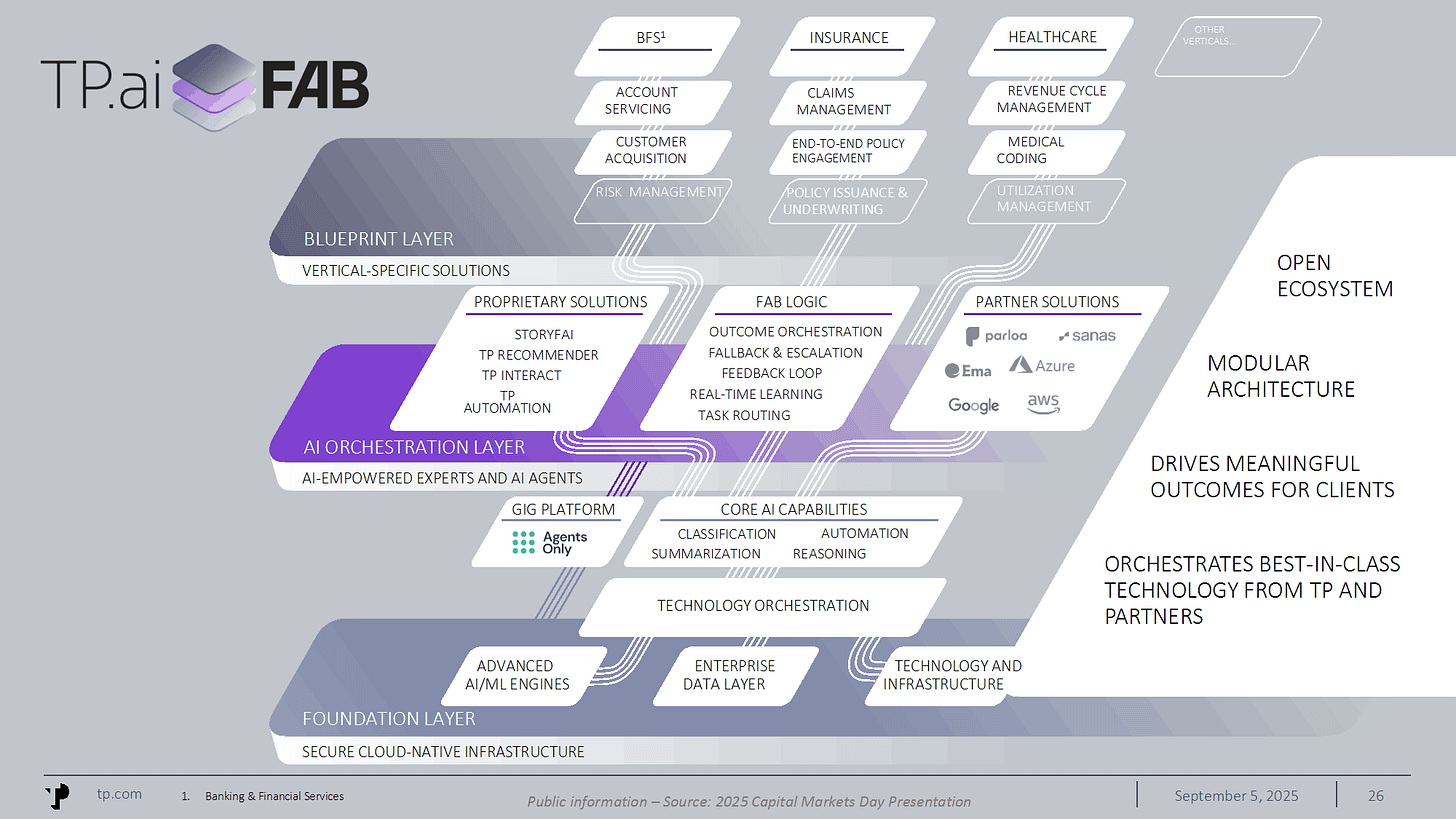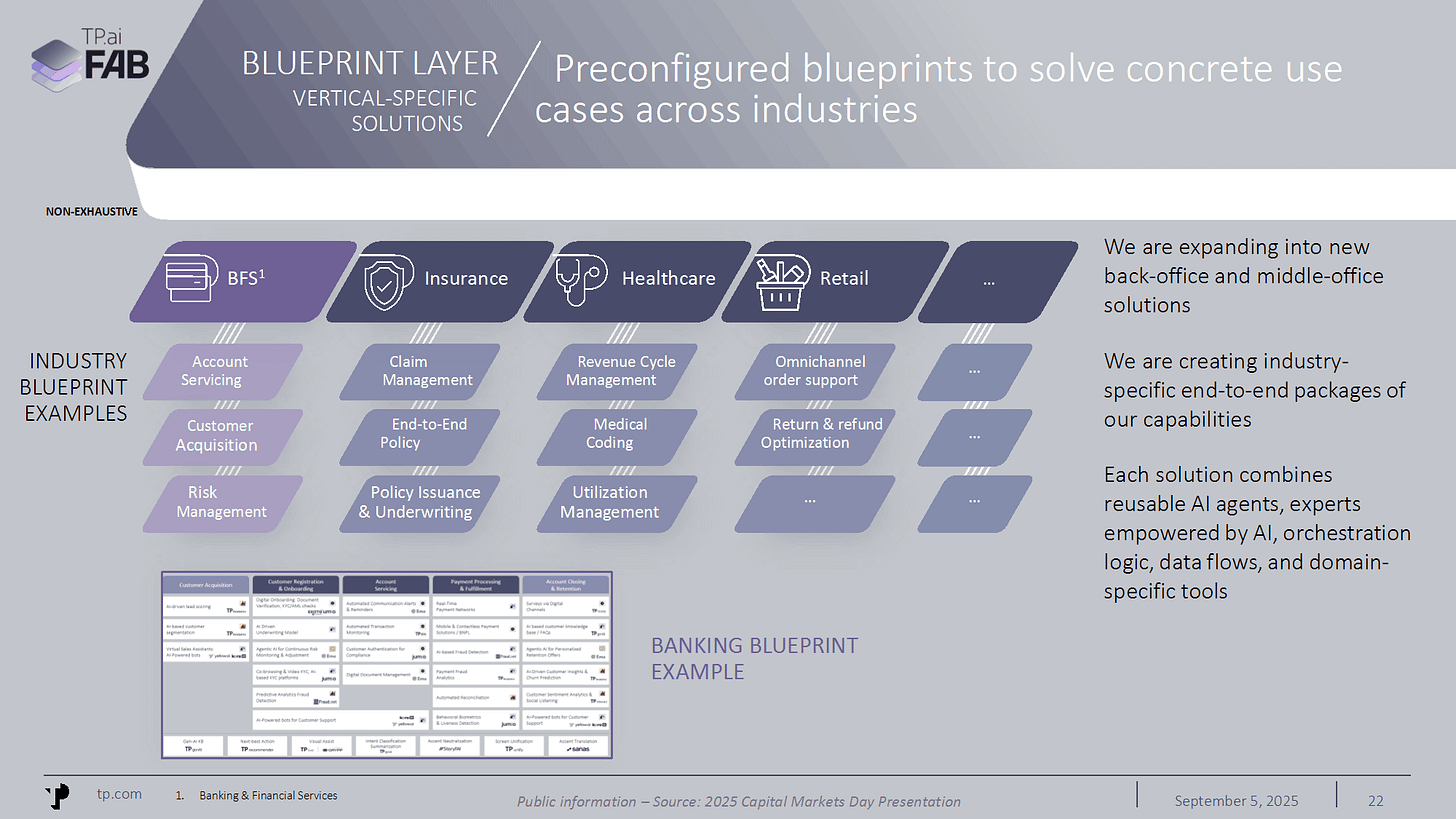TP hosted an Industry Analyst Summit in late August at its Santa Clara TP Innovation Experience Center (TIEC).
I set out on the two days with a creeping concern that BPOs were standing at the forefront of AI’s disruptive effects, grappling with three market headwinds:
Many enterprises dictate the technology stack for their BPOs, potentially hindering their ability to integrate people and technology, which is critical in an AI-driven world.
Enterprises struggling to convert early AI projects into bottom-line gains have pressured BPOs to cut prices, often assuming that AI should already have reduced costs.
Many BPOs have been engaged for some time in shifting from a people-based business model to outcome-based models, but the transition has proven more difficult than expected. This has prompted some players to look outside to disrupt themselves, for example, Alorica investing in Crescendo.
Furthermore, TP has faced scrutiny from the financial community following its 2023 mega merger with Majorel. The deal created a $10B powerhouse with just under half a million employees worldwide. Meanwhile, debt surged to $6B, and investors questioned the relevance of pursuing economies of scale in an AI-driven world.
TP has demonstrated strong execution discipline, achieving 2.6% organic revenue growth last year while many BPOs saw their top line decline, and projecting further growth of 3% to 5% in 2025. It has also strengthened its balance sheet, reducing debt by nearly $900M since its 2023 peak.
Against that backdrop, three key learnings stood out to me from the event.
TP is aggressively expanding its value proposition by going deeper into processes and leveraging the domain expertise it has built through its engagements. It has also moved into higher-value services such as data annotation. Himadri Sarkar highlighted the engagement model TP has developed, showing how it elevates TP from traditional outsourcing to process optimization and outcome maximization.
The company has invested heavily in building its AI framework, Fab.AI (Foundational AI Backbone). Danny Kuivenhoven, Global Head of AI, unpacked the framework and its three layers.
The bottom layer, Foundation, provides access to AI models, whether homegrown or commercial, and includes governance and observability. It also offers connectivity to TP’s customer technology stacks.
The middle layer orchestrates AI and human agents, leveraging TP technology assets and partner solutions. TP has established strategic relationships with the three hyperscalers—AWS, Google Cloud, and Microsoft Azure—and invested over $100M in three companies: Ema (AI agents for workflow automation), Parloa (voice agents for customer self-service), and Sanas (voice AI for noise cancellation and accent neutralization).
An innovative model underpins this approach, reflecting TP’s vision of humans and AI collaborating, with humans stepping in when AI cannot perform a task and continuously improving its performance. Many companies claim AI will transform work, but few explain how—TP deserves credit for doing exactly that. The model was shared under NDA, so I cannot discuss it further.
The top layer, Blueprint, enables TP to turn its domain expertise into industry- and use-case-specific pre-built process blueprints. We saw a compelling demo for insurance claims, leveraging Ema’s technology, showing workflow automation across applications and systems in a real-world scenario.
TP has built a formidable system integration arm. Called Technology-as-a-Service (TaaS) and led by Siva Pothi, the 8,000-employee organization supports in-house projects and also serves as a solution integrator for customers. It spans nine business lines, including a CCaaS practice with strategic relationships with Amazon Connect, Genesys, NICE, and Sprinklr, and already has over 100 customer engagements.
Rather than polished product showcases, TP had teams from around the world demonstrate what they were actually using, sometimes in the middle of the night. The demos spanned a wide range of use cases, including TP Interact, its homegrown Quality Management and Conversation Intelligence solution; TP Steering, its agent copilot solution; TP AI Nesting, for AI role-play; TP Accent Neutralization (Sanas); and TP Agentic AI (Ema).
It was an insightful couple of days, revealing a company with a solid vision for reinventing itself in the AI world and already executing it steadily.
Many thanks to Dan Hong, Emmanuelle Lerooy, and Leslie Surley Kostrikin for hosting me and providing firsthand insights into an industry in transition and TP’s vision in action.





